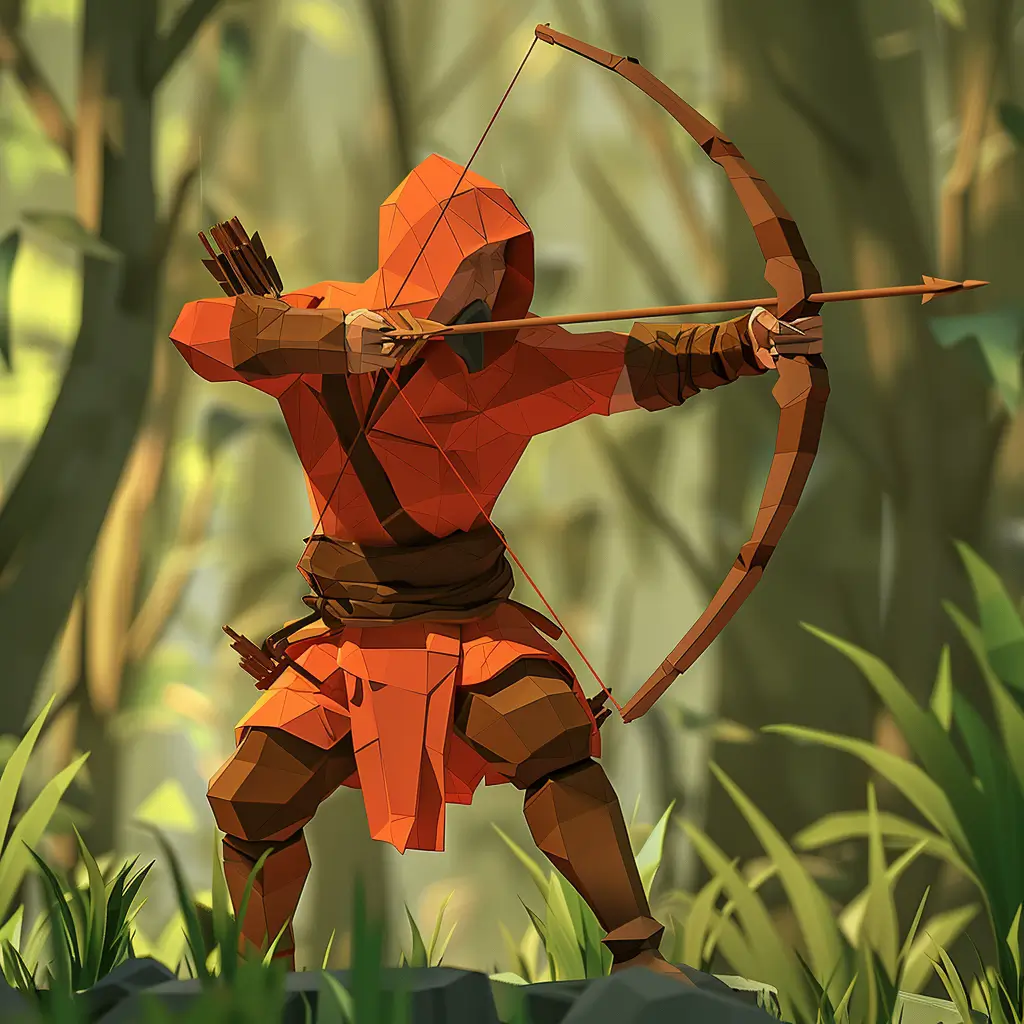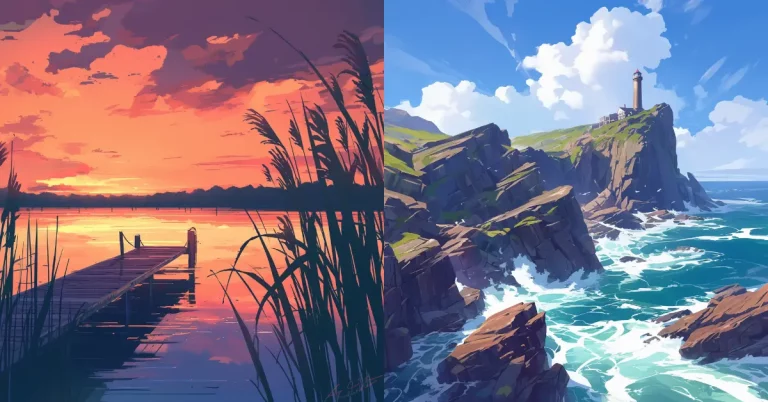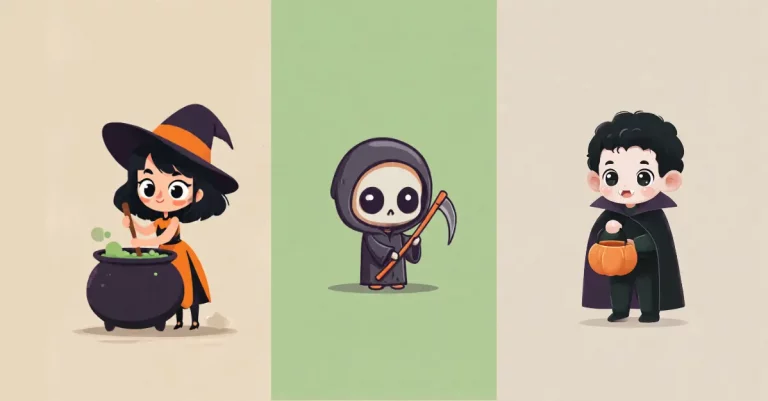19 Midjourney Prompts for Low Poly Art
First, let me ask you a question: have you ever looked at a 3D model or a digital image and thought, “Wow, those polygons are huge!”? If so, then you’re already familiar with the basic concept of low poly art.
In this post, I’ll be sharing 19 Midjourney prompts that I’ve used to create some really cool low poly artworks. I’ll also give you a crash course on what low poly art is and share some tips on how to craft your own prompts to generate unique pieces.
As someone who loves experimenting with different art styles, I find low poly art to be incredibly fascinating. It’s amazing how such simple shapes can come together to create intricate and beautiful scenes. Plus, there’s just something satisfying about seeing those clean, crisp edges and facets.
Let’s get creative and see what kind of awesome art we can generate with Midjourney!
What is Low Poly Art
Before we jump into the prompts, let’s take a moment to understand what low poly art is all about. In a nutshell, low poly art is a style characterized by 3D models with a relatively small number of polygons. This gives the artwork a distinct angular and faceted appearance.
Low poly art has its roots in early 3D video games, where designers had to work with limited processing power. By using fewer polygons, they could create 3D models that were less resource-intensive. Over time, this style evolved into an aesthetic choice, with artists intentionally using low poly techniques to create unique and captivating visuals.
One of the coolest things about low poly art is how versatile it is. You can find low poly designs in video games, illustrations, animations, and even sculptures. Some of my favorite examples include the quirky characters in the game “Crossy Road” and the stunning low poly animals created by artist Timothy Reynolds.
So, what makes low poly art so appealing? For me, it’s the perfect blend of simplicity and complexity. The angular shapes and flat surfaces give the artwork a clean and modern look, while the clever use of color and lighting adds depth and interest. It’s like looking at the world through a kaleidoscope – everything is broken down into basic forms, but the resulting image is still remarkably intricate.
Craft Prompts for Low Poly Art in Midjourney
Let’s talk about how you can create your own low poly art using Midjourney. The key is to craft prompts that guide the AI in the right direction.
When writing prompts for low poly art, I like to focus on three main elements: shapes, colors, and lighting. For shapes, I use words like “angular,” “faceted,” and “geometric” to emphasize the distinct low poly look. I also mention specific shapes, like “triangles” or “polygons,” to further reinforce the style.
Color is another important aspect of low poly art. I often include descriptive words like “vibrant,” “pastel,” or “muted” to give the AI an idea of the color palette I’m going for. You can also mention specific colors or color combinations that you want to see in your artwork.
Lighting is what really brings low poly art to life. I like to use phrases like “dramatic lighting,” “soft shadows,” or “ambient occlusion” to add depth and dimension to the scene. You can also describe the light source, such as “neon lights” or “golden hour,” to create a specific mood or atmosphere.
One of the most helpful features in Midjourney for creating low poly art is the “–stylize” parameter. By adding “–stylize 200” to the end of your prompt, you can crank up the low poly effect and get some really cool results. Play around with different stylize values to find the sweet spot for your artwork.
When crafting your prompts, try to strike a balance between being specific and leaving room for the AI to interpret and create. You want to provide enough detail to guide the AI in the right direction, but not so much that you limit its creative potential.
19 Midjourney Prompts for Low Poly Art
Alright, now for the moment you’ve been waiting for – the prompts! Here are 19 Midjourney prompts that I’ve used to create some awesome low poly art:
- Low poly sunrise over a tranquil lake, pastel colors, minimalist –stylize 200

- Low poly volcanic island, lava flows, angular terrain, dramatic lighting –stylize 200

- Low poly potted plants, geometric leaves, pastel background –stylize 200

- Low poly female portrait, angular features, colorful makeup, stylized –stylize 200

- Low poly dungeon interior, torches, treasure chests, fantasy RPG –stylize 200

- Low poly knight, shiny armor, sword and shield, heroic pose –stylize 200

- Low poly superhero, geometric cape, vibrant colors, dynamic action pose –stylize 200

- Low poly dinosaur skeleton, museum exhibit, dramatic lighting, educational –stylize 200

- Low poly camping scene, geometric tent, campfire, forest background –stylize 200

- Low poly cowboy, geometric hat, revolver, desert landscape –stylize 200

- Low poly floating islands, waterfalls, lush vegetation, fantasy world –stylize 200

- Low poly bamboo forest, geometric stalks, misty atmosphere, serene –stylize 200

- Low poly archer, angular bow, quiver, forest background –stylize 200

- Low poly haunted house, gothic architecture, eerie lighting, horror game –stylize 200

- Low poly vampire portrait, angular features, dark colors, gothic –stylize 200

- Low poly wind turbines, geometric blades, green energy, minimalist –stylize 200

- Low poly typewriter, vintage keys, paper scroll, sepia tones –stylize 200

- Low poly circus tent, geometric big top, colorful flags, carnival atmosphere –stylize 200

- Low poly ice cream cart, geometric scoops, waffle cones, park setting –stylize 200

Each of these prompts combines descriptive language with the “–stylize 200” parameter to create unique low poly scenes. From whimsical camping trips to eerie haunted houses, there’s a prompt here for every mood and style.
Feel free to use these prompts as a starting point for your own low poly explorations. Mix and match elements, add your own personal touches, and see what kind of incredible art you can create with Midjourney.
Tips for Creating Low Poly Art
First, don’t be afraid to experiment with different “–stylize” values. While “–stylize 200” is a great starting point for low poly art, you might find that a lower or higher value works better for certain scenes. For example, if you want to create a low poly character with more facial details, you might try a lower stylize value like 100.
Another tip is to combine low poly elements with other styles or themes. Just because you’re working with a low poly aesthetic doesn’t mean you can’t incorporate other cool ideas. Try blending low poly with cyberpunk, steampunk, or even art deco styles to create something truly unique.
Remember, crafting the perfect prompt takes practice. Don’t get discouraged if your first few attempts don’t turn out exactly as you envisioned. Keep tweaking your prompts, adjusting your stylize values, and iterating on your ideas. The more you experiment, the better you’ll get at creating low poly art that you love.
If you’re feeling stuck, try looking at real-world objects or scenes for inspiration. Take a walk outside and observe the shapes and colors around you. How would you translate that park bench or that skyscraper into a low poly design? Sometimes, the best ideas come from the most unexpected places.
Finally, have fun with it! Low poly art is all about embracing creativity and letting your imagination run wild. Don’t be afraid to try new things, even if they seem a bit unconventional at first. You never know what kind of amazing artwork you might create.
We’ve covered a lot of ground in this post, from understanding the basics of low poly art to crafting effective prompts and generating our own unique pieces with Midjourney.
I hope this post has inspired you to dive into the world of low poly art and explore all the incredible possibilities that Midjourney has to offer. Whether you’re a seasoned artist or a complete beginner, there’s never been a better time to start experimenting with this fun and accessible style.






